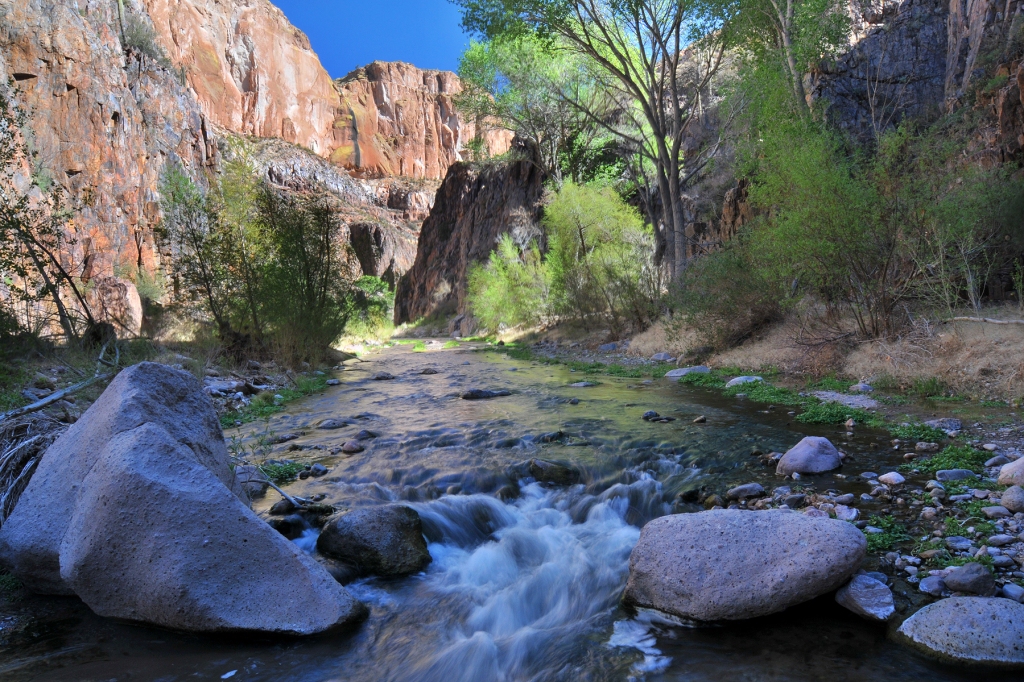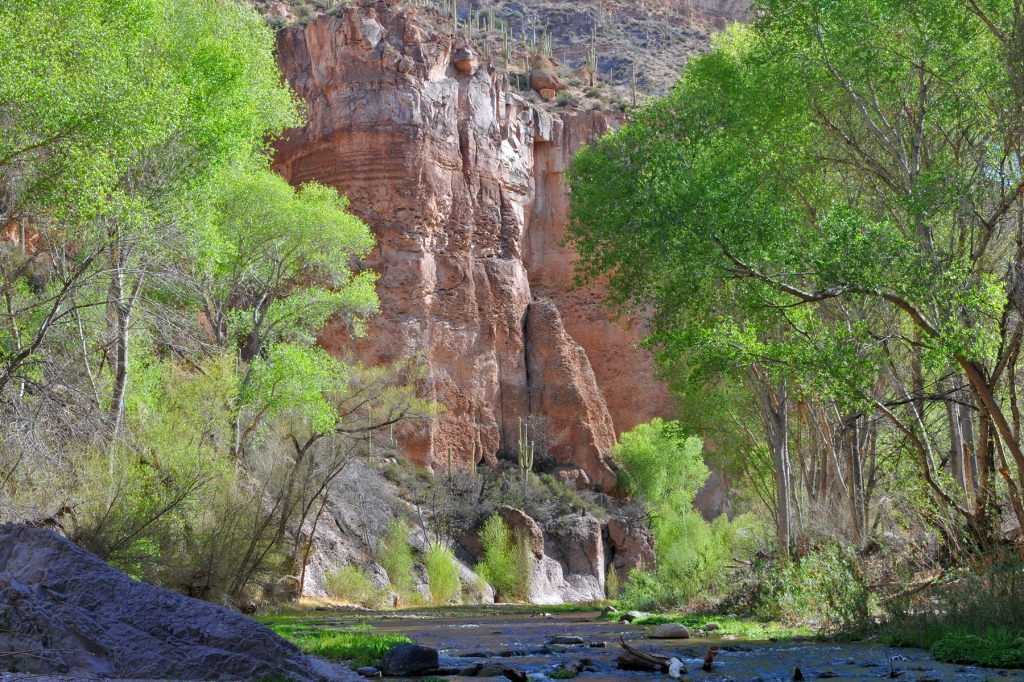I learned of Aravaipa Canyon reading Edward Abbey’s “Down The River” and decided to see it for myself in 2011. Here’s the way he described it back in 1982. As close as I can tell, it hadn’t changed a bit.
Southeast of Phoenix and northeast of Tucson, in the Pinal Mountains, is a short deep gorge called Aravaipa Canyon. It is among the few places in Arizona with a permanent stream of water and in popular estimation one of the most beautiful. I am giving away no secrets here : Aravaipa Canyon has long been well known to hikers, campers, horsemen, and hunters from the nearby cities. The Federal Bureau of Land Management (BLM), charged with administration of the canyon, recently decreed it an official Primitive Area, thus guaranteeing it’s fame. Demand for enjoyment of the canyon is so great that the BLM has been obliged to institute a rationing program: no one camps here without a permit and only a limited number of such permits are issued.
Twelve miles long from end to end, the canyon is mostly occupied by the little river which gives it it’s name, and by stream banks piled with slabs of fallen rock from the cliffs above, the whole overgrown with cactus, trees, and riparian desert shrubbery.
Aravaipa is an Apache name (some say Pima, some say Papago) and the commonly accepted meaning is “laughing waters.” The name fits. The stream is brisk, clear, about a foot deep at normal flow levels, churning it’s way around boulders, rippling over gravelbars, plunging into pools with bright and noisy vivacity. Schools of loach minnow, roundtail chub, spike dace, and Gila mudsuckers-rare and endemic species-slip and slither past your ankles as you wade into the current. The water is too warm to support trout or other varieties of what are called game fish; the fish here live out their lives undisturbed by anything more than horses’ hooves and the sneaker-shod feet of hikers.
The Apaches who gave the name to this water and this canyon are not around anymore. Most of that particular band-unarmed old men, women, children-huddled in a cave near the mouth of Aravaipa Canyon, were exterminated in the 1880s by a death squad of American pioneers, aided by Mexican and Papagos, from the nearby city of Tucson. The reason for this vigilante action is obscure (suspicion of murder and cattle stealing) but the results were clear. No more Apaches in Aravaipa Canyon. During pauses in the gunfire, as the pioneers relaoded their rifles, the surviving indians could have heard the sound of laughing waters. One hundred and twenty five were killed, the remainder relocated in the White Mountain Reservation to the northeast.
We reach the mouth of the canyon and the old trail uphill to the roadhead in time to see the first stars come out. barely in time. Nightfall is quick in this arid climate and the air feels already cold. But we have earned enough memories, stored enough mental-emotional images in our heads, from one brief day in Aravaipa Canyon, to enrich the urban days to come. As Thoreau found a universe in the woods around Concord, any person whose senses are alive can make a world of any natural place, however limited it might seem, on this subtle planet of ours.
“The world is big but it is comprehensible,” says R. Buckminster Fuller. But it seems to me that the world is not nearly big enough and that any portion of it’s surface, left unpaved and alive, is infinitely rich in details and relationships, in wonder, beauty, mystery, comprehensible only in part. The very existence of existence is itself suggestive of the unknown-not a problem but a mystery.
We will never get to the end of it, never plumb the bottom of it, never know the whole of even so small and trivial and useless and precious a place as Aravaipa. Therein lies our redemption.











